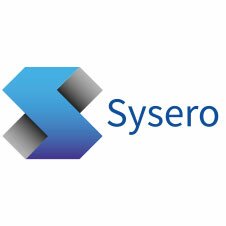Sysero: Five ways document workflows build better business processes
In today’s highly competitive legal landscape, every law firm wants to maximise productivity, improve client satisfaction, and gain a competitive edge. However, many law firms still struggle with optimising legal processes and knowledge. In order to overcome key operational challenges and stay a step ahead of the competition, today’s law firms need to embrace workflow technology and redefine the way they work.
In fact, according to PWC, one of the biggest challenges for law firms this year has been adapting to new working practices, and their top priorities are improving the use of technology, standardising and centralising processes, and improving legal services. It’s no wonder then, that law firms are turning to workflow automation technology to streamline processes, reduce risk, and ultimately deliver a better client experience.
By mapping out core business processes and investing in the right technology, your firm can transform its approach to transactional business and create a foundation for greater efficiency, adaptability and productivity. At Sysero, we’ve worked with leading firms around the world to design and implement automated workflows to facilitate better business processes. Here, we share five ways that your firm can put document workflow automation into practice to solve some of today’s most common business challenges.
Improve Accuracy & Quality
Documents are a key element of a law firm’s transactional business. However, managing documents can be difficult without the right processes in place and manually updating and managing documents can lead to errors and mistakes. According to recent research, lawyers devote nearly 50% of their time to administrative tasks, such as reviewing and drafting documents and configuring technology.
By leveraging workflow automation, firms can create a more streamlined approach to document production, whilst simultaneously minimising the risk of human error and improving risk management through standardised processes.
Take for example, how Vinge, one of Sweden’s premier law firms, uses its Vinge Dox system to allow lawyers to quickly and easily build document packs, which enable them to create a set of documents using the information input into a single form. By only requiring data input once, the likelihood of human error is minimised.
Maintain Compliance & Reduce Risk
In today’s constantly changing regulatory environment, it can be a challenge to keep up with the latest regulations. However, workflow automation makes it easier for law firms to reduce risk by embedding compliance best practices into lawyers’ daily work. As one lawyer makes a nuanced decision, it can be replicated across the firm and automatically built into document workflows.
Additionally, workflow tools like Sysero automatically capture and document every step of the process, creating a crucial audit trail for compliance. By standardising and embedding compliance and security best practices into document production, workflow automation can be the key to minimising risk amongst staff working from various locations.
Accelerate Processes and Productivity
Streamlining document workflows can also result in increased productivity and faster turnaround times. By simplifying processes, you can free up more of your lawyers’ time to focus on pressing client issues, while providing more efficient client service.
Castren & Snellman (C&S), a full-service business law firm in Finland, has significantly improved its lawyers productivity with the introduction of its Signe tool, which uses Sysero’s document workflow automation to streamline the document production process. By leveraging workflow automation to quickly and accurately produce business-critical documents, C&S has been able to shift much of its lawyers’ time from drafting documents to providing added value to clients.
Enhance Data Security
Law firms inherently handle a lot of sensitive and confidential information – which if compromised can lead to loss of client trust, significant reputational damage, and hefty fines. The good news is that workflow automation can help keep legal data safe by enforcing data protection policies, including pseudonymisation, data encryption, and data retention policies.
For example, Sysero’s workflow automation tools can be configured to immediately encrypt client data as it’s entered into a contact form or document field. This data can then be pseudonymized to further safeguard data and mitigate risk in case of a data breach.
Facilitate Hybrid Working
In the wake of the pandemic, more firms are moving towards a flexible, hybrid working environment. Even legal powerhouse Linklaters has adopted an ‘agile working policy’ that allows employees to work remotely up to 50% of the time.
While hybrid working comes with many benefits, it does present some key operational challenges – and the key to a successful hybrid working model is mobility and flexibility. Law firms can use workflow automation to make core business processes available in the cloud, such as contract management and document production. Using an e-signing tool like Sysero E-Sign as part of your document workflows can also significantly speed up processes, whilst making it easier to keep business moving forward regardless of where lawyers, staff, and clients may be working.
Ready to Build Better Processes for your Firm?
Get in touch with our team at Sysero to discuss your firm’s challenges and uncover a new way of working using workflow automation.



